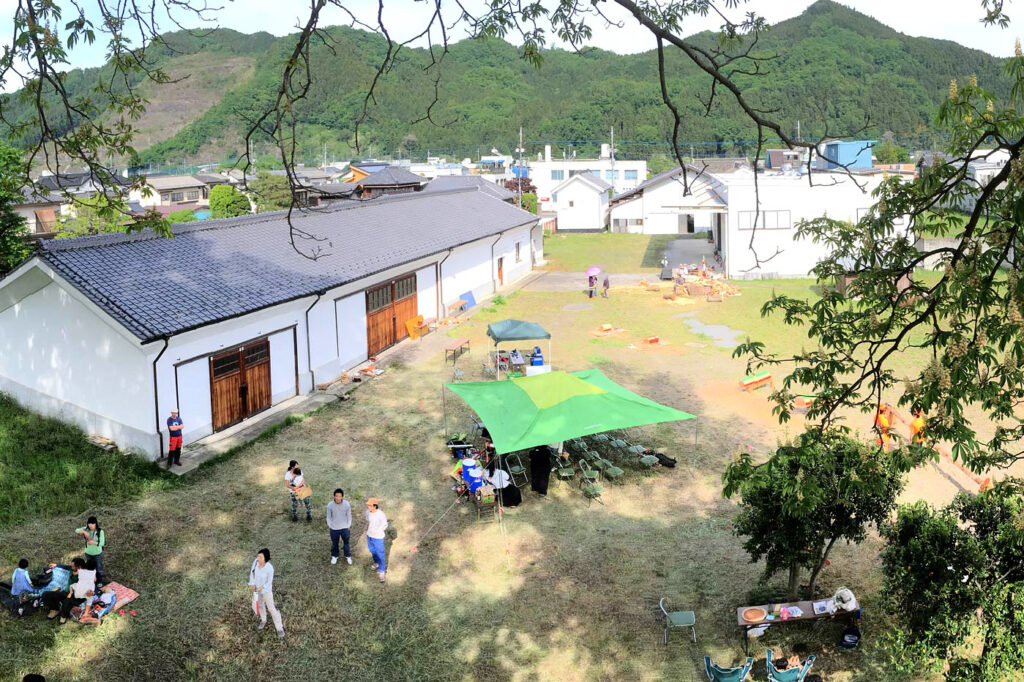The town of Onishi (population 4,900) was once an important collection point along the silk road. The sericulture (silk) farmers from the surrounding mountains would come to the valley town and sell their raw silk to merchants.
Shiro Oni Studio’s Kinuya building was central in this trade and sold silk on its way north for almost a century. With the modernization of Japan’s economy, labor-intensive sericulture faded, and silk is no longer produced.
While the silk trade has moved overseas, another industry of the town still continues. Onishi quarries red and green gardening stones called ‘Sanbaseki,’ after the river they come from, ‘Sanbagawa.’ The stones, often larger than a car, can be seen in parking lots and along roads throughout town.
Today, with the loss of population and industry in the mountainous countryside, the same geography that once channeled traders through the area cuts Onishi off from the outside world. Many of the buildings in the center of town have already been demolished, and the remaining structures are often used for storage or simply abandoned. Shiro Oni Studio ultimately aims to help reverse this by bringing outgoing, community-minded artists to the area.


